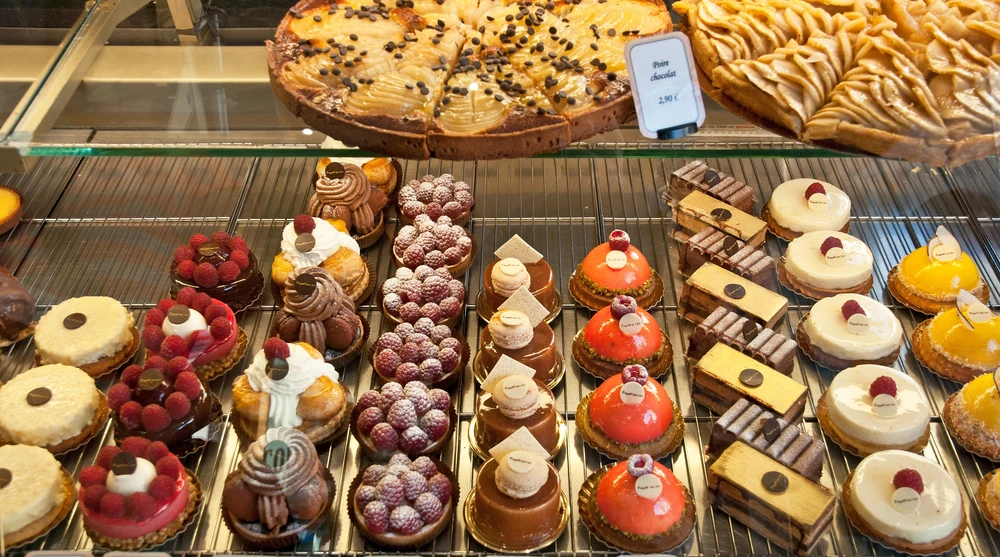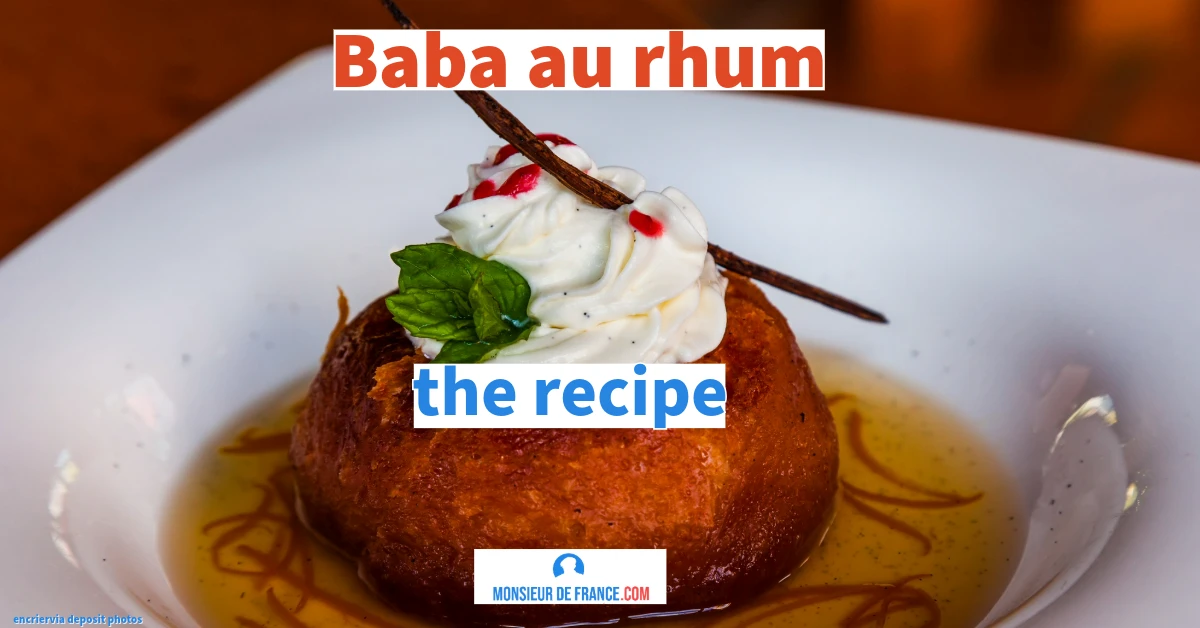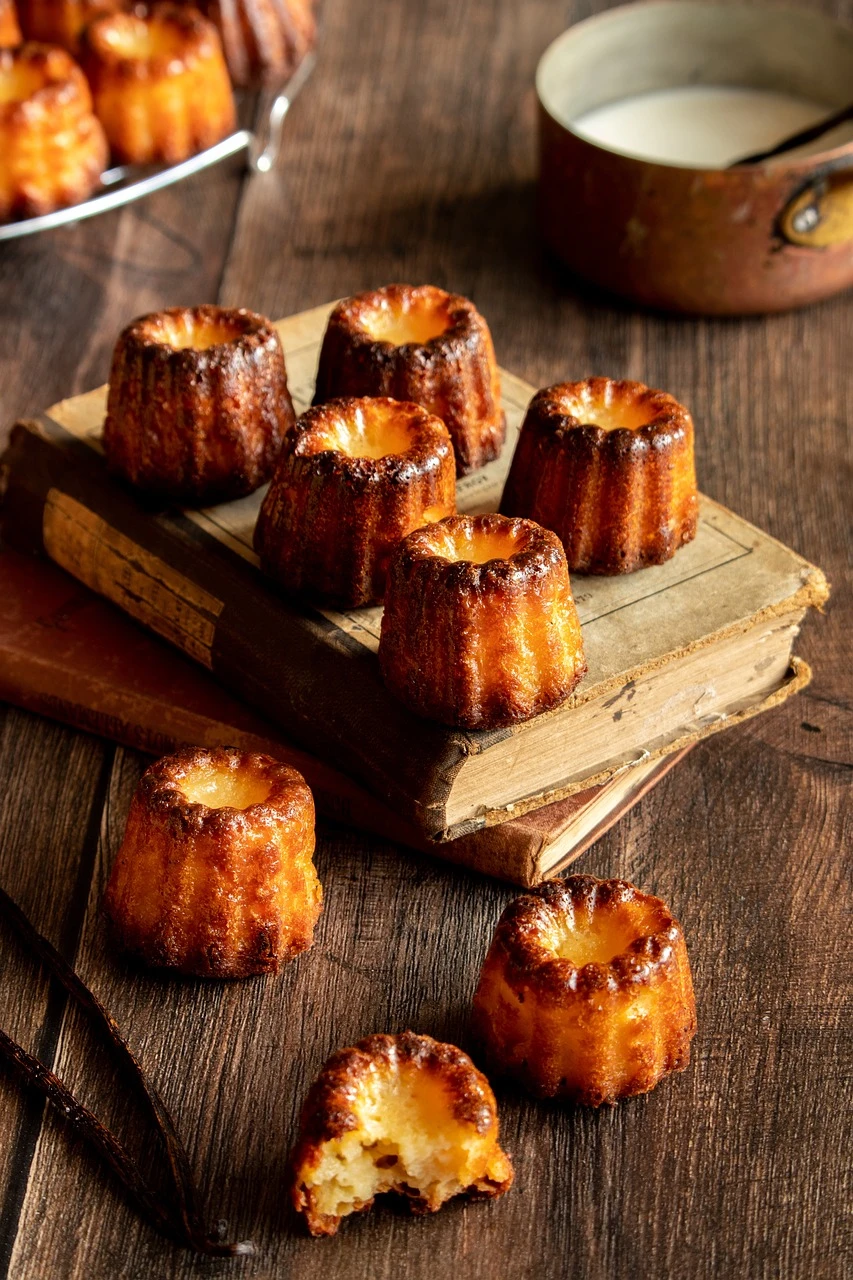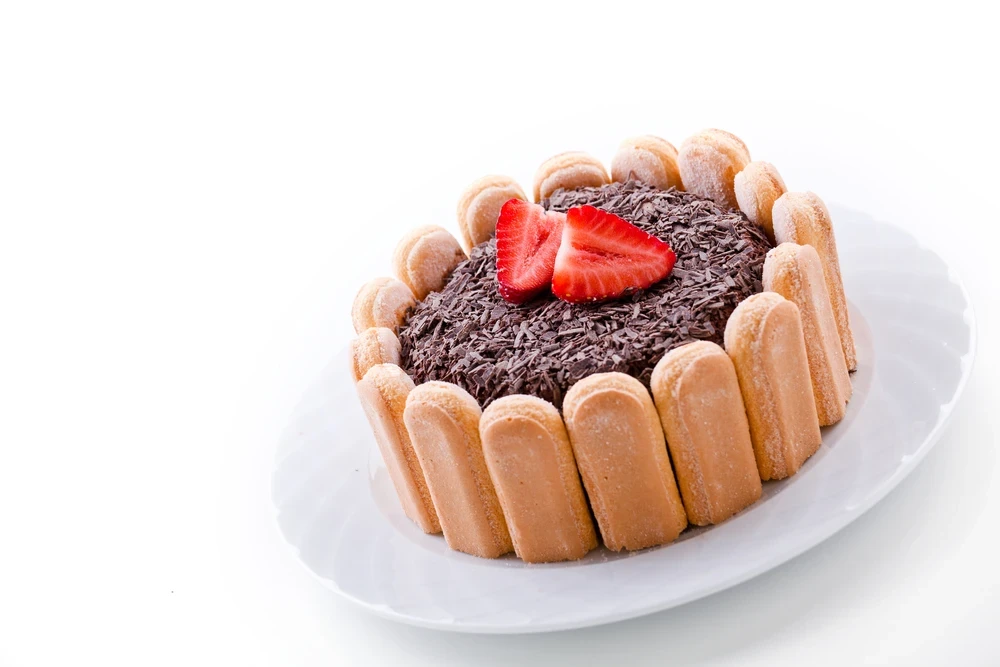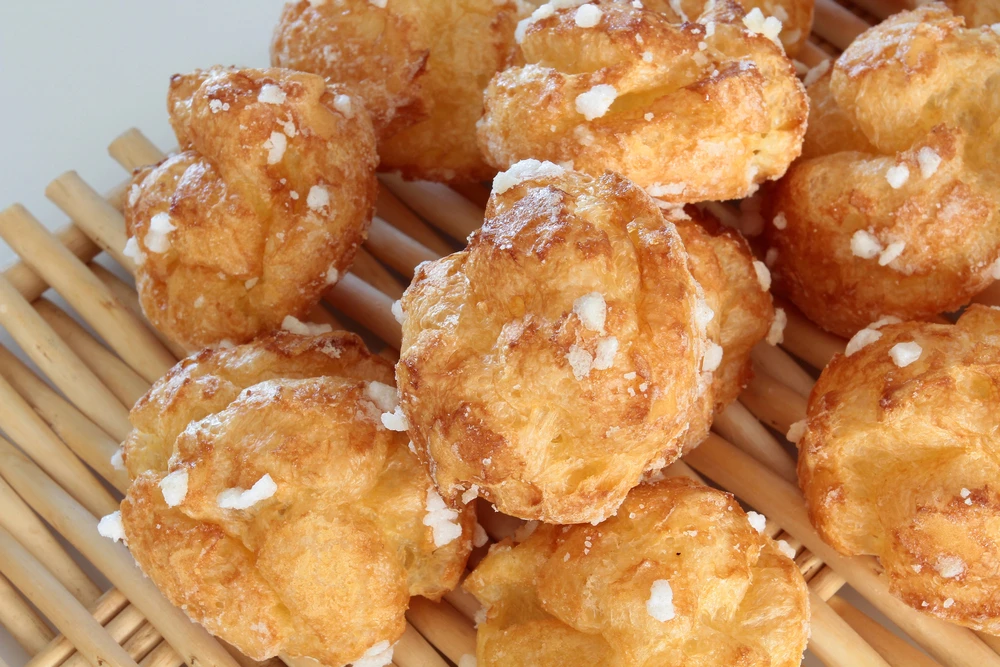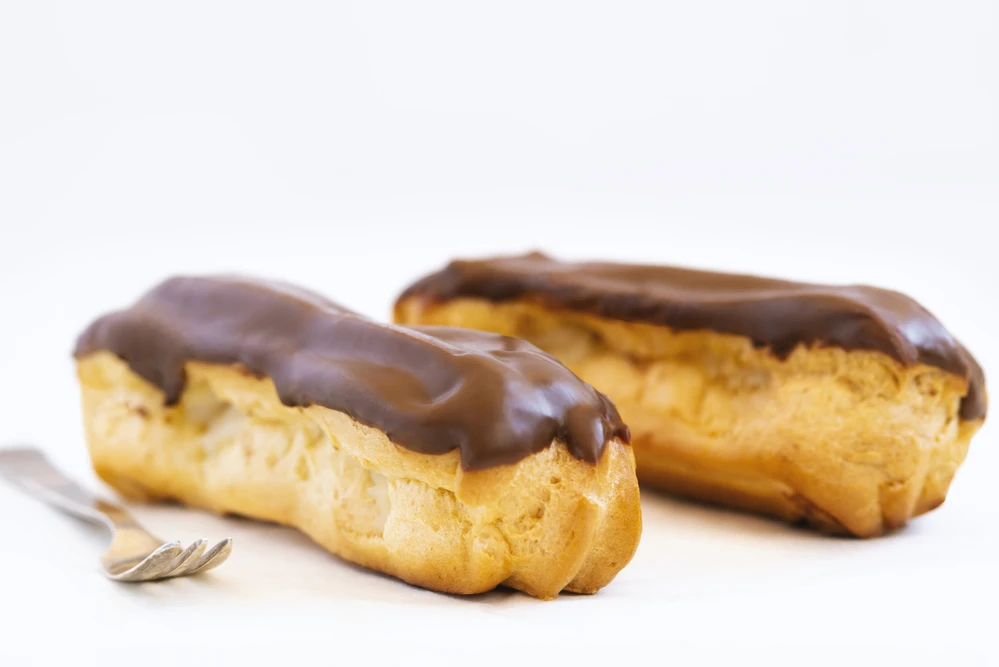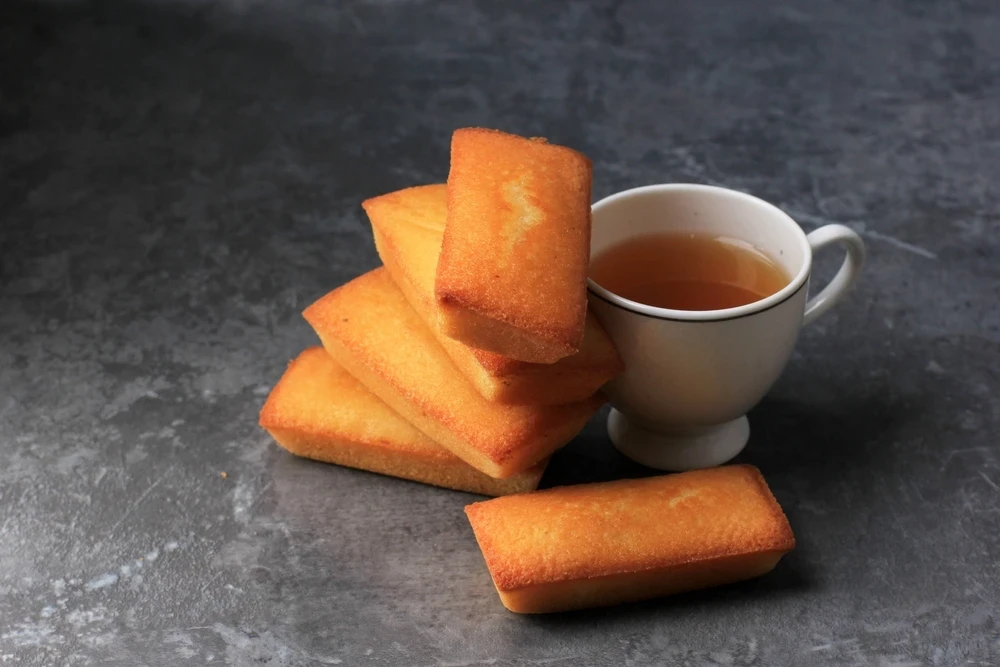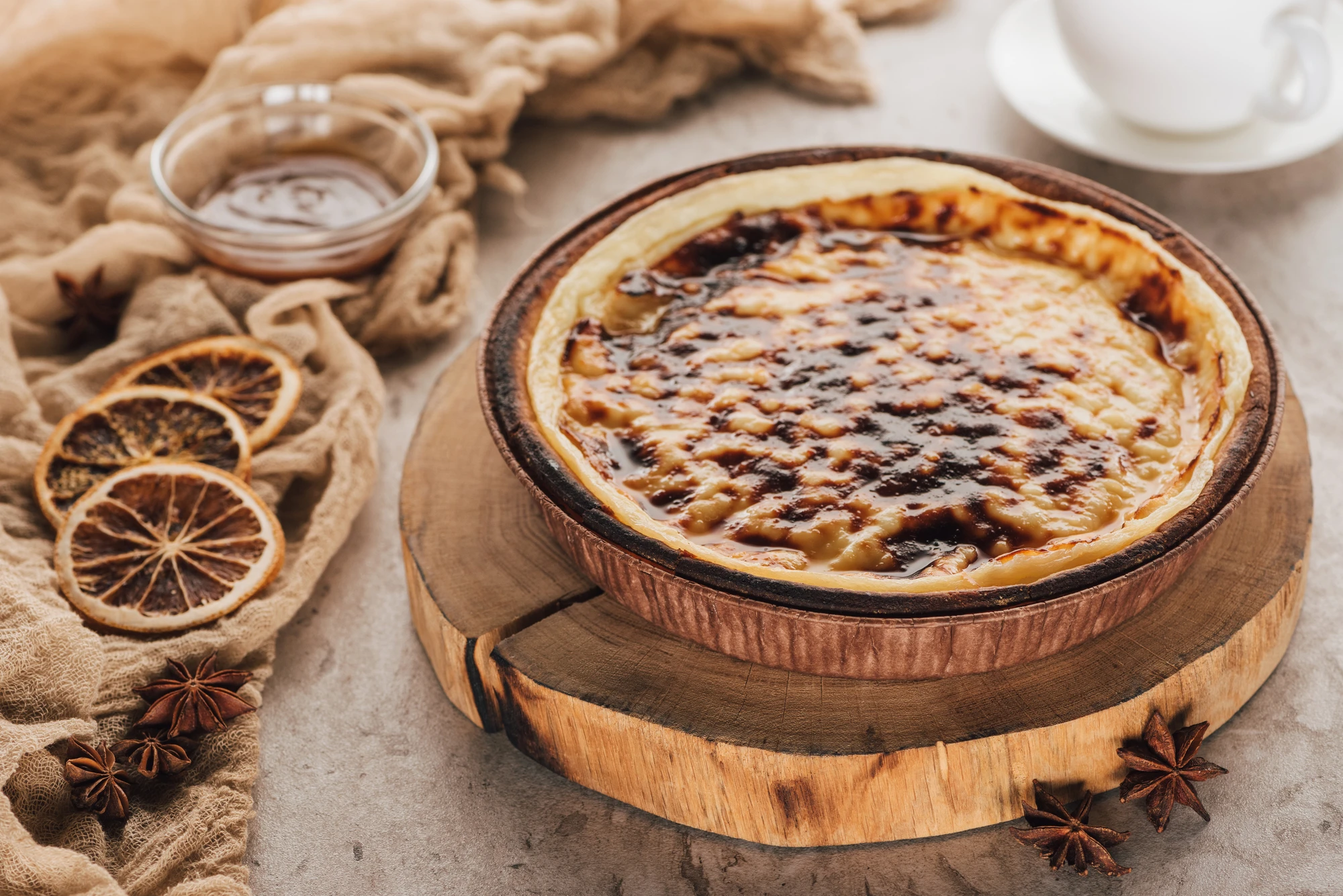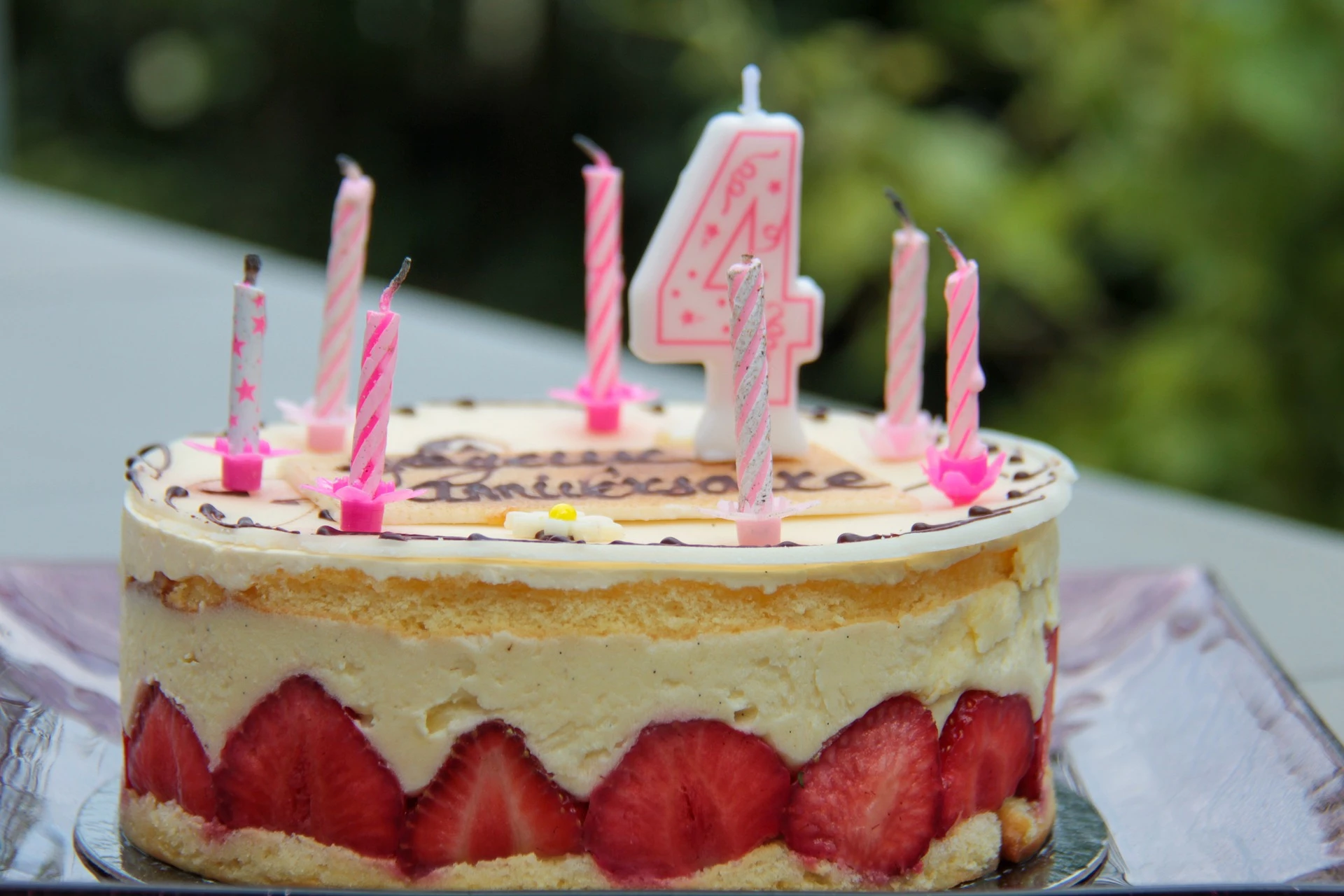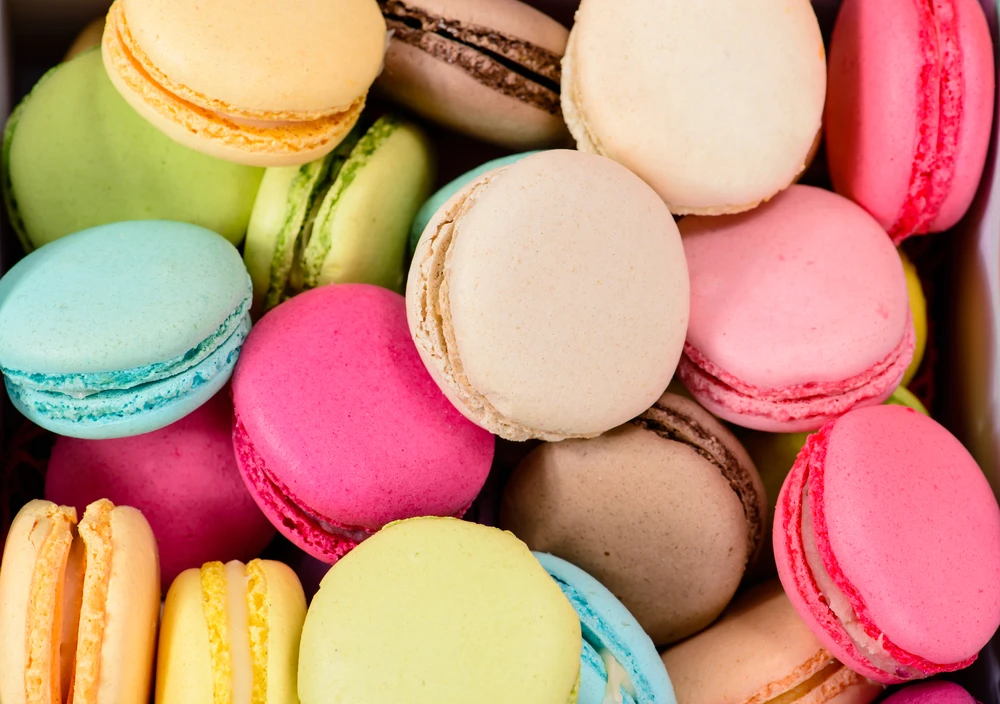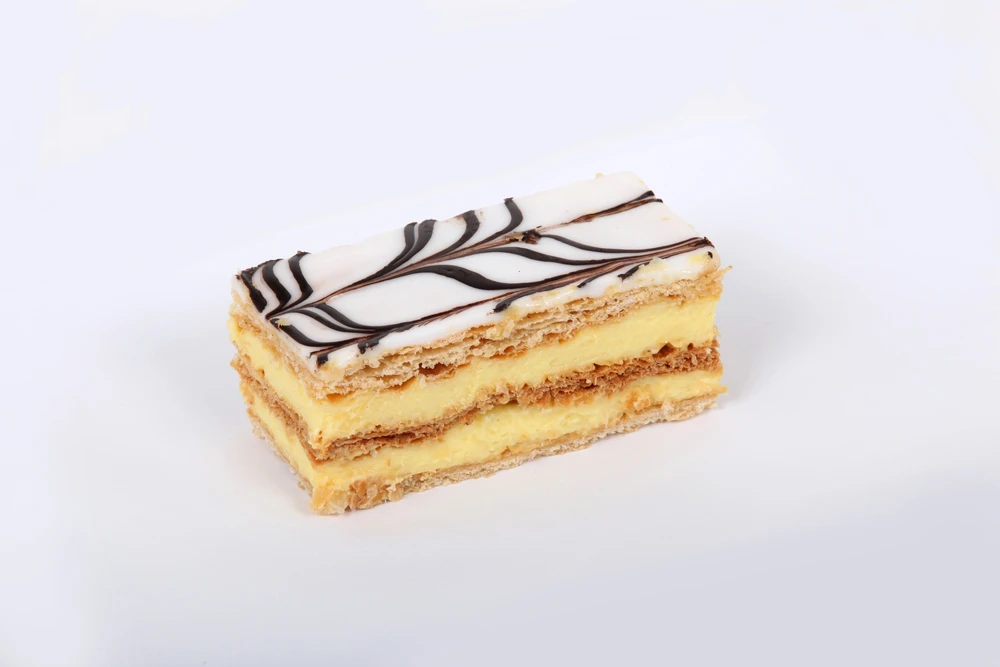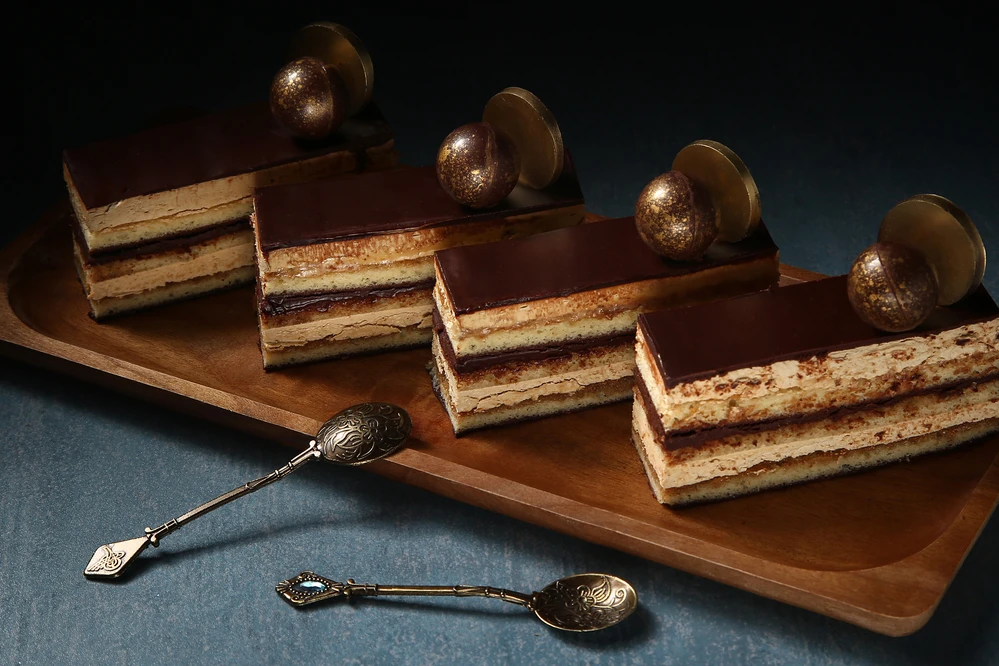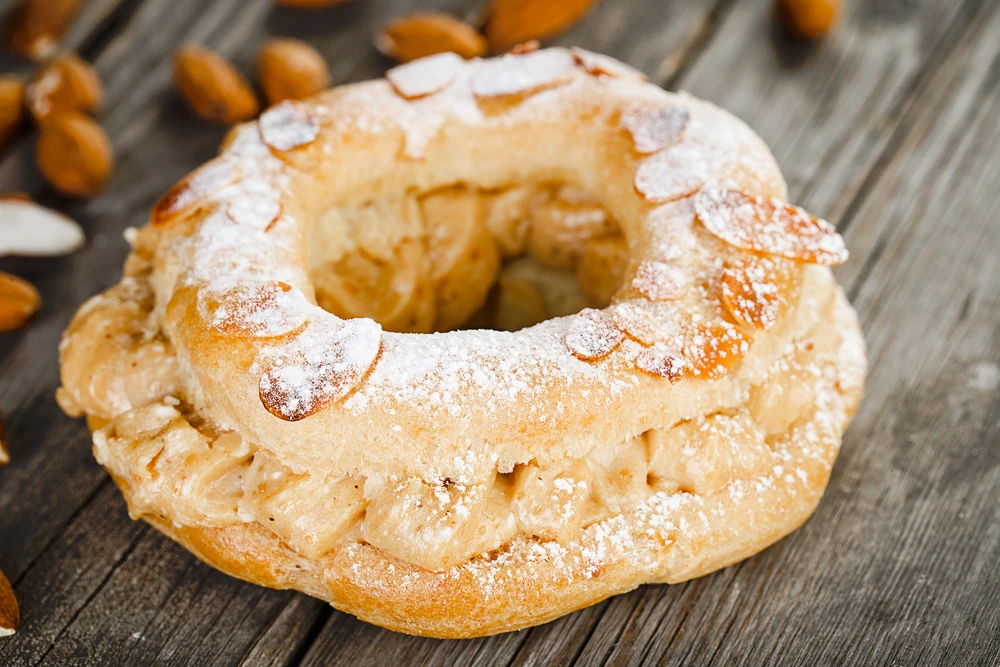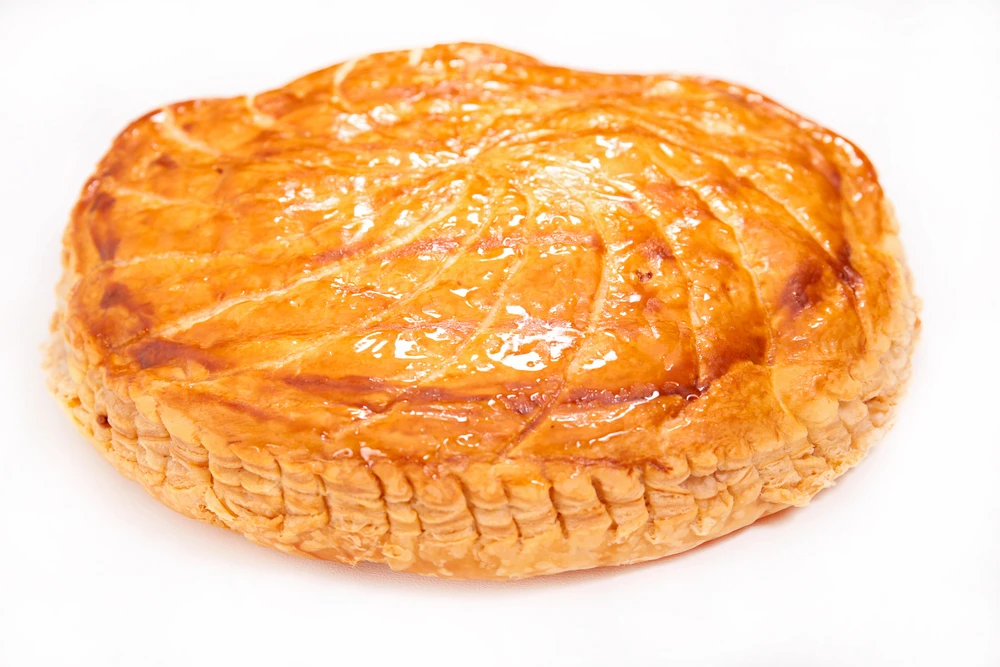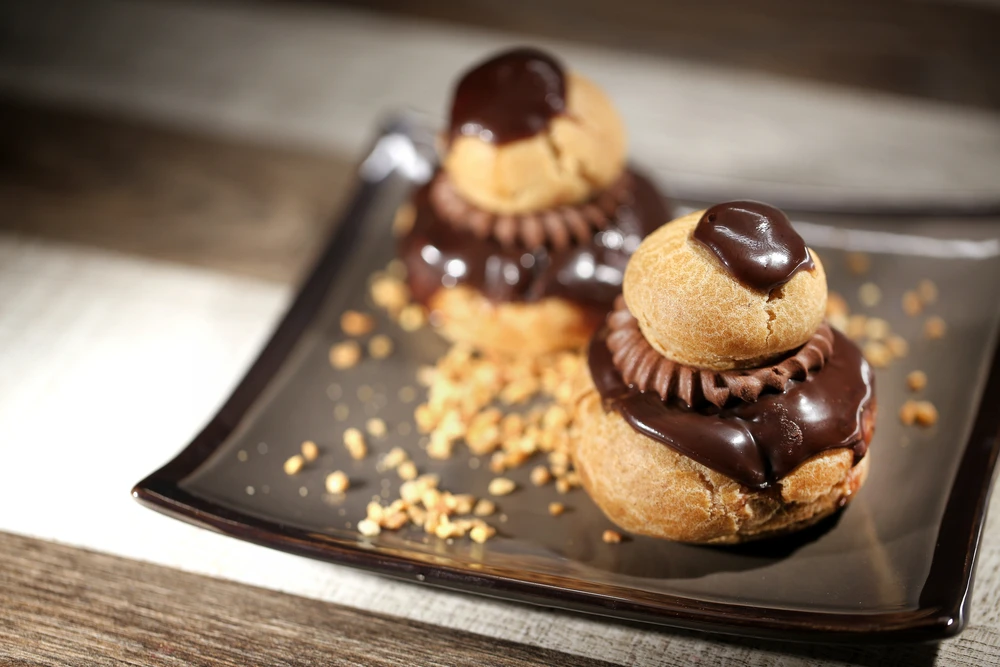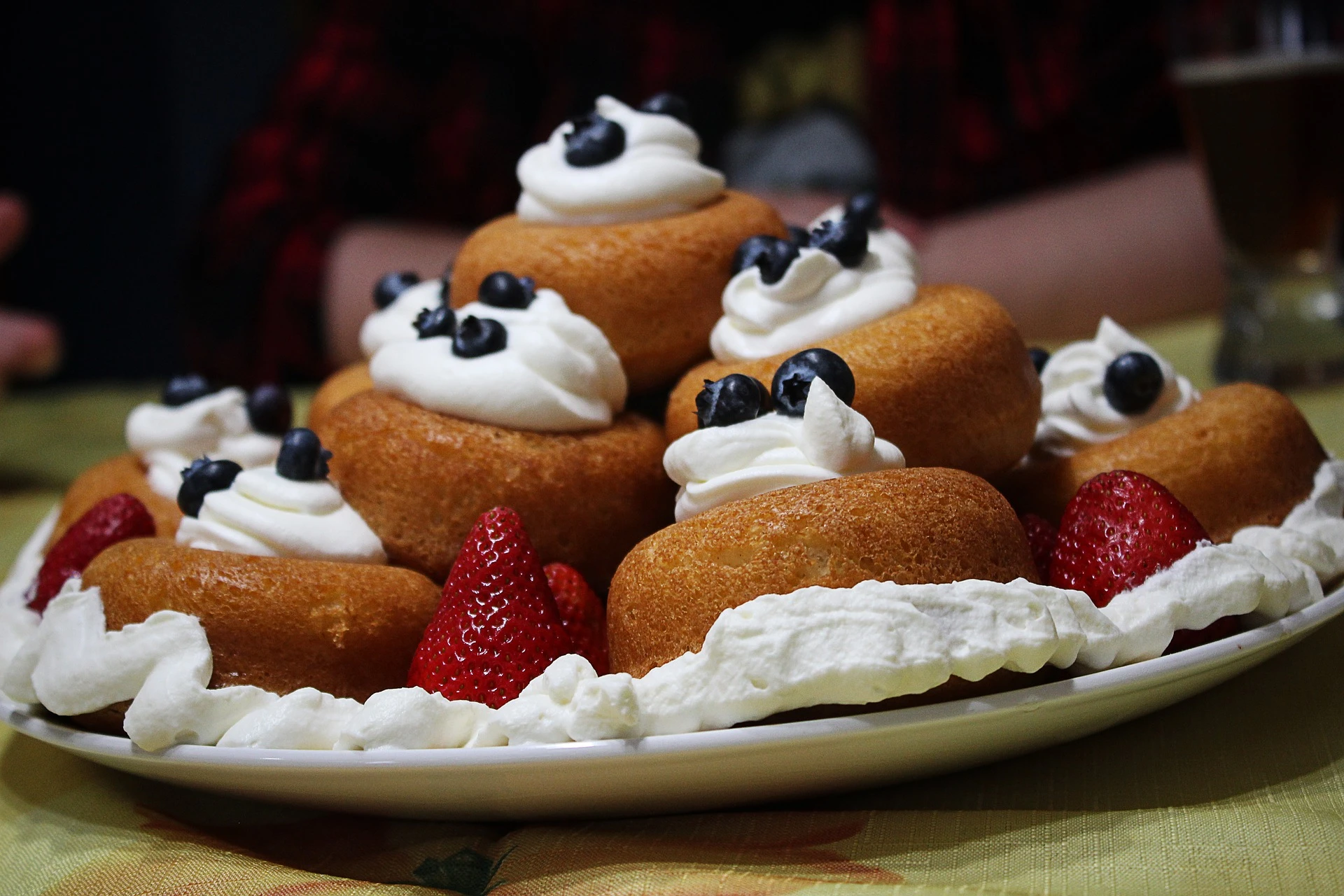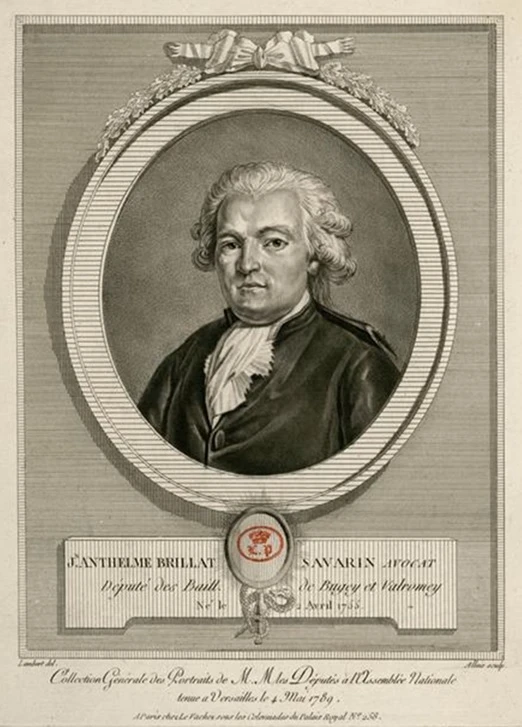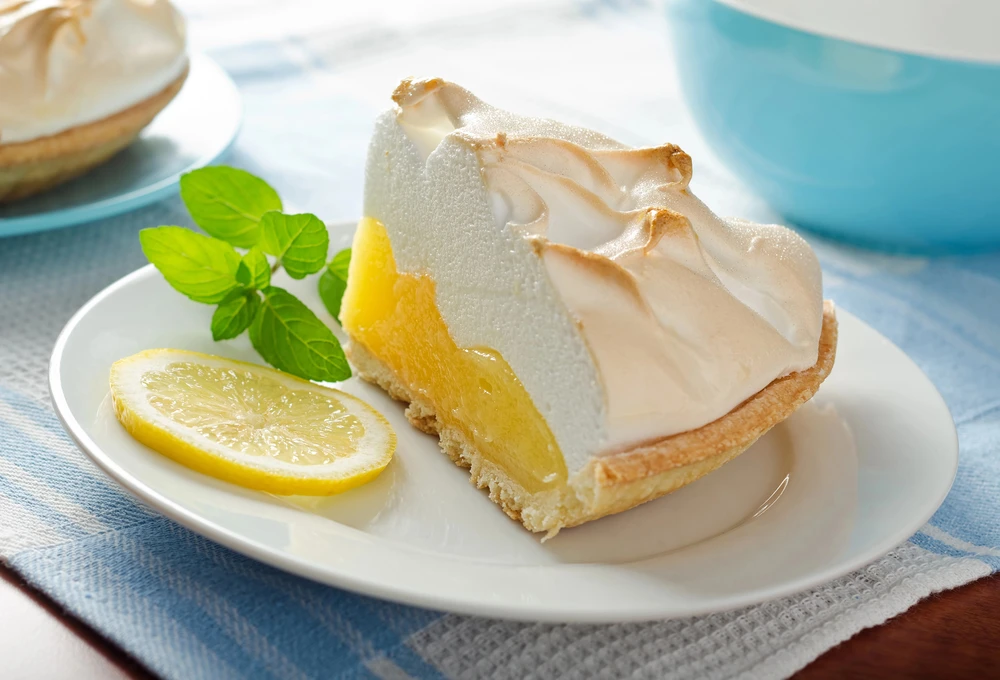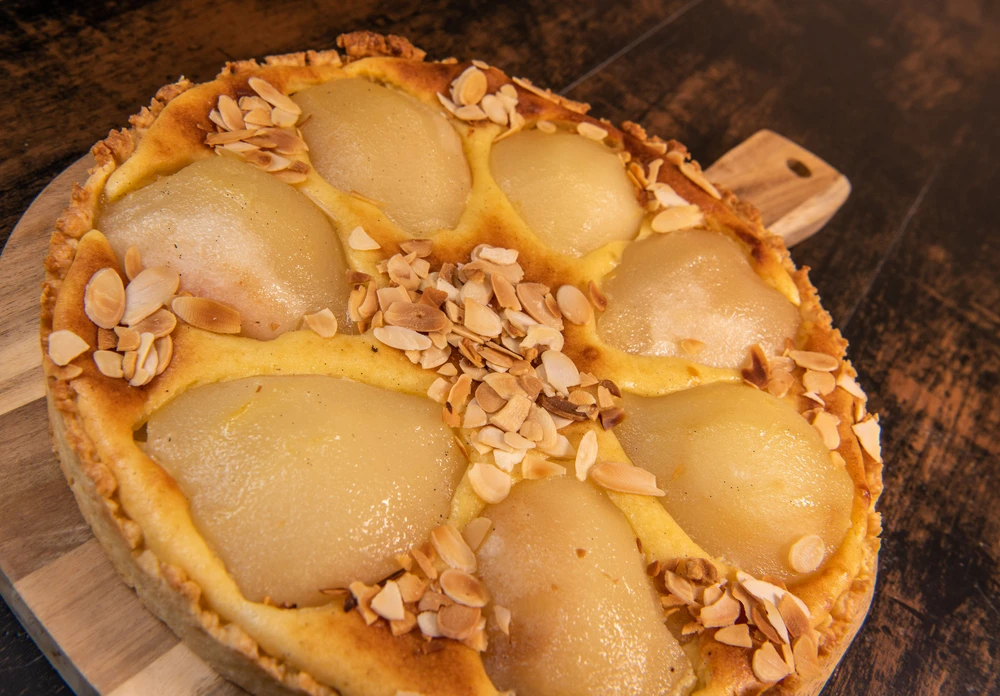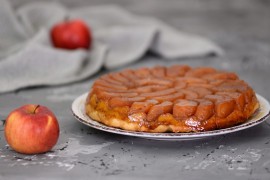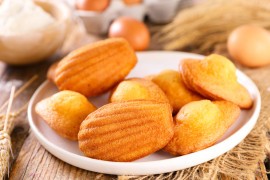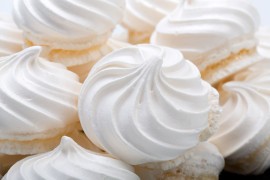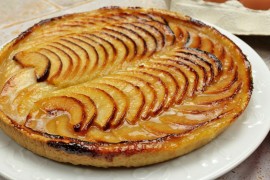France's 20 best-known pastry shops
A pastry shop / Photo selected by monsieurdefrance.com: Botond via dépositphotos
Sorted alphabetically, not by preference (I like them all!). Careful, it'll make you hungry!
1 Rum baba
It's a leavened pastry, sometimes filled with custard, sometimes with raisins, and topped with whipped cream soaked in rum. It was invented in Lorraine by King Stanislas , who found his kouglof too hard to eat for a toothless king. He came up with the idea of soaking it in sweet wine to soften it. The idea was later taken up by pastry chef Stöhrer, on rue Montorgueil in Paris, who replaced the wine with rum .
2 le canelé
Canelés / Photo chosen by Monsieurdefrance.com: by Blandine JOANNIC from Pixabay
You'll find them all over France, but canelés are a Bordeaux speciality , which is hardly surprising given the city's close ties with the West Indies, where vanilla and sugar originated. It's a very moist cake, made from a kind of crêpe dough, cooked with rum, vanilla and cane sugar. The mold is very special, and gives it its name. It's a canelé mold, with canelles, the grooves that conduct heat more quickly and allow the caramelization so typical of canelés.
3 charlotte (strawberry, chocolate...)
A charlotte, or chocolate marquise. Photo chosen by monsieurdefrance.com depositphotos
Even if it's rarely served in individual portions, charlotte deserves a place in the rankings. Originally an English invention, made with buttered bread and fruit, it was sublimated by the great chef Antonin Carême, "the king of cooks and cook to kings", who turned it into this sublime dessert, encircled by "boudoirs", with a garnish full of gourmandise. Best served with a crème anglaise (we owe them that much!). I prefer chocolate charlotte, and the recipe is here.
4 Chouquettes
Chouquettes. Photo chosen by monsieurdefrance.com: frederiquewacquier via depositphotos
What could be better than chouquettes when you want to treat yourself quickly and well? They're great when you want to take something home for a snack. A choux pastry is sprinkled with sugar pearls. Some people trace choux pastry back to the 16th century and to an Italian pastry chef named Pantannelli, who is said to have followed Queen Catherine de Médicis from Florence. What's certain is that the earliest written traces date back to the 19th century, and in particular to Antonin Carême, the great chef who was originally a pastry chef. It's quite complicated to make. Made from a dough with eggs, it is cooked in water and milk. The more water you put in, the drier and puffier the pastry becomes; the more milk you put in, the less it rises, but the more delicious it is. The choice is yours. Choux pastry will be found in a number of desserts here. And choux pastries, filled with crème pâtissière or chantilly, make up the famous "pièce montée" that used to be served at major family events (weddings, communions, etc.). They were drizzled with caramel to keep them in place. Occasionally, the "pièces montées" tilted a little because of the humidity.
5 L'éclair (chocolate, coffee, vanilla...)
A chocolate éclair. Photo chosen by monsieurdefrance.com: vigenmnoyan.gmail.com via depositphotos
They're made from choux pastry, but in an elongated shape. The dough is cut in half, the inside is filled with crème pâtissière (milk, eggs, butter and flour) and the top is filled with cream. It's just delicious. It was born around 1850 and was called "la duchesse" for a long time, before it came to be called "éclair" because it was eaten in a flash (very, very quickly!). And it's true that it's so quick to eat, it's so good). They are mainly available in chocolate, coffee, vanilla and pistachio flavors. Breton pastry chef Christophe Adam has made them his specialty.
6 the financier
A financier with coffee is just perfect. Photo chosen by monsieur de France via Shutterstock.
A delicious cake with almond powder that makes it very moist. It was invented in the 19th century, based on an old recipe from Nancy, by a pastry chef named Monsieur Lasne to give something to the brokers who passed his house on their way to the nearby Paris stock exchange and wanted to eat quickly. So he modified the recipe of the visitandines de Nancy slightly to make this ingot-shaped cake to remind his customers that they were going to make money. The recipe is here if you want to make them yourself.
7 The Parisian flan.
Parisian flan. Photo chosen by monsieurdefrance: depositphotos.
Made with eggs, crème fraîche and sugar, Parisian flan or flan pâtissier is very simple. It's very similar to the Portuguese pastel de nata. The mixture (known as a migaine) is spread on shortcrust pastry or pâte sablée. I don't know how many calories it contains, but it's so good! If you'd like to make your own flan, you can find Monsieur de France's recipe here.
8 the black forest.
Let's be honest, the black forest is not French at all. It was invented in Germany at the beginning of the 20th century (although some people trace it back a little further in history), but you'll often come across it in French patisseries, because in France we love what's good. And this cake is really good. It's a chocolate sponge cake, filled with chantilly cream and sprinkled with chocolate shavings.
9 The strawberry plant
Strawberries are a great treat at the end of a family meal. Photo chosen by monsieurdefrance.com: by Pat de Pixabay
It's Grandma's favorite Sunday dessert! Finally, in individual portions, it's one of the best pastries you can get from the pros (it's not easy to make at home). It's a sponge cake with a buttercream filling, topped with a layer of plump strawberries and covered with an almond paste. The first to imagine such a cake was the great Auguste Escoffier (1846-1935), the greatest French chef after Antonin Carême. The current recipe was revisited by Gaston Lenôtre in 1966, who soaked the buttercream in kirsch. This is the recipe we know today.
10 macaroons (macarons in French)
Parisian macaroons / Photo chosen by monsieurdefrance.com: smspsy via depositphotos
There are two kinds of macaroons. Traditional macaroons, which are often linked to a particular town or region (e.g. macaroons from Nancy, Boulay, Amiens, Joyeuse...) and the small, colorful macaroons that we've been loving for a few years now. Initially, it seems that the Italians came up with this little cake and that Catherine de Médicis, born in Florence and Queen of France in the 16th century, brought them with her. It's a mixture of egg white, flour and almonds. The early 20th century saw the arrival of Parisian macaroons, with a cream inside. Nowadays, macaroons come in all colors and flavors (strawberry, yuzu, pistachio, raspberry...).
11 The mille-feuilles
Succulent mille-feuille. Photo chosen by monsieurdefrance.com: photography33 via depositphotos.
3 layers of puff pastry and 2 layers of pastry cream. That's a mille-feuille. The name is well-deserved, since as the puff pastry expands and swells, it resembles leaves. In fact, there are 729 of them, if you follow the instructions for making puff pastry. It's said to have been invented by a truly astonishing boy: Claude Gellée, known as "le lorrain"(1600-1682). Born in Chamagne, Lorraine, into a family of pastry-makers, he was orphaned when he followed a troupe of baladins on their way to Rome. He cooks on the way, and is hired as a helper by the Italian painter Tassi to prepare paintings for him (it's so close to pastry-making that you have to be precise). Tassi discovered the Lorrain's talent and helped him train. He was one of the greatest painters of the 17th century. Legend has it that he invented puff pastry, which is used in many French dishes and desserts. To return to the Mille-feuille, it is said to have been invented by French chef François de la Varenne (1651) and perfected by Antonin Carême in the 19th century to give it the look we know today. It is known in many countries around the world as the "Napoleon", probably because the French enjoyed it in the 19th century, particularly during the Napoleonic Wars (which explains why the Russians are so familiar with mille-feuilles).
12 The opera
You've got to admit, an opera is a sight to behold. Photo chosen by monsieurdefrance.com: M-StudioG via depositphotos.Com
The opera is a very gourmet cake. It consists of several layers of "joconde" cookie (between the sponge cake and the Savoy cookie)on which a chocolate ganache and a coffee buttercream are layered. It is said to have been invented by Maison Dalloyau (Madame Dalloyau gave it the name Opéra) in 1955. But it is also said to have been created by Gaston Lenôtre in the 60s. That said, an opera cake, sold near the Opéra Garnier, already existed in the 19th century. What counts is that it's one of the most gourmet of all French cakes.
13 Le Paris Brest
A Paris-Brest is THE pastry to try if you love praline. Photo chosen by monsieurdefrance.Com: Knartz via depositphotos
France is the land of cycling. The best proof is that the Tour de France is the best-known cycling race in the world. France is also where the pedal was invented. And as a result, the bicycle can also be found... In French pastries. A Paris-Brest is a wheel-shaped choux pastry filled with a praline-flavored mousseline cream (buttercream and crème pâtissière). Louis DURAND, a pastry chef in Maisons-Laffitte, is said to have imagined it in 1909, giving it a shape reminiscent of a bicycle wheel, a sport already well known in his day .
14 le pithiviers
A pithivier. Photo chosen by Monsieurdefrance.com: studioM via depositphotos
Imagine a galette des rois without beans, and you've got a pithiviers. A pithiviers is a good puff pastry filled with frangipane (an almond cream). It originates from the town of Pithiviers, in the Loiret region near Orléans, where it was born in the 17th century. It was the inspiration for today's galette des rois. It also exists in a savory version.
15 une religieuse (a nun)
A good chocolate nun. Photo chosen by monsieurdefrance.Com: ruben25 via depositphotos
It was born in the 19th century, at the same time as the chocolate éclair and the development of choux pastry. It can be filled with chocolate or coffee custard... Don't forget the topping. There are also versions with two similar balls, in which case they're called "un divorcé". There's also an acorn-shaped version, known as a gland.
16 Saint Honoré
A saint-honoré: the king of French cakes. Photo chosen by monsieurdefrance.com: PhotoCuisine / Riou, Jean-Christophe via getty.com
In all honesty, it's the king of French cakes. It has to be said that it's difficult to make if you want to enjoy it properly, and that it can't be kept for long, not least because the cream that fills it, the "chibouste" cream, doesn't keep. But what a pleasure! It's a shortcrust (or puff pastry) filled with choux pastry, which puffs up when baked, and topped with pastry cream. You make several balls , then put them together, leaving a hole in the middle of the assembly before coating the whole with chocolate, caramel or jam, depending on taste. In the center (or sometimes inside the choux) is the famous Chiboust cream, a pastry cream with egg whites. Monsieur Chiboust, a Parisian pastry chef, created the cake in 1840 and named it after the street where he had his store: rue Saint Honoré. Saint Honoré was also the patron saint of bakers.
17 Le savarin
Des savarins / Photo chosen by monsieurdefrance.com: Christian Geof from Pixabay
It's the same principle as baba au rhum , except that it's soaked in a kirsch-based syrup (cherry alcohol). It was the invention of two confectioner brothers: Arthur and Auguste JULIEN. Established on rue Vivienne, near the Paris Bourse, they envied the success of Stohrer's baba au rhum and decided to work on the idea in their own way. In 1845, they created a crown-shaped cake based on the original kouglof that Stanislas had soaked in wine, and soaked the cake in a syrup of their own invention that included kirsch (with a little anisette). The creation is dedicated to Brillat-Savarin (1755-1826), the great gastronome who had died a few years earlier, and is an immediate success.
Jean Anthelme BRILLAT-SAVARIN, the great gastronome, to whom the JULIEN brothers dedicated their creation. Illustration chosen by monsieurdefrance.Com: By Louis-Jean Allais/ After Jean Baptiste Ponce Lambert - http://toutsurlheraldique.blogspot.com/2010/11/noblesse-imperiale-n46.html, Domaine public, https://commons.wikimedia.org/
18 lemon tart
Lemon tart always looks better with meringue! Photo chosen by Monsieur de France: rfudio via depositphotos
It's a tart made from shortcrust pastry and topped with a creamy mixture of egg, sugar, lemon juice and lemon zest. It's even better topped with an Italian meringue.
19 la tarte bourdaloue
The real bourdaloue pie. Photo chosen by monsieurdefrance.com: FreeProd via depositphotos
A tart born on the rue Bourdaloue in Paris , in the Maison Lesserteur, from the imagination of Nicolas Bourgoin. It's a poached pear tart, drowned in a vanilla frangipane cream and sprinkled with chocolate pearls or flaked roasted almonds. If you'd like to try your hand, the recipe is here.
20 fruit tarts
Strawberry tart is so good. Photo chosen by Monsieur de France: AlexLipa via depositphotos
Many fruits grow in France and are used to make a wide range of tarts. There's nothing better than a strawberry tart in fine weather, when the strawberries of southern France or Brittany come into season. You can also enjoy apple tarts, with a little cinnamon for the Normandy apple tart, or a sweet migaine for the Alsace apple tart. There's also the Tarte Tatin , baked upside down, for which this is the recipe. Fruit is often placed on top of a custard for added indulgence.
By the way! Why do we say "patisserie"?
"Le triomphe des pâtissiers" 19th century image chosen by Monsieur de France on Gallica.fr / BNF / Selene Bordeaux
In the old days, baking meant making pastry. And no one would have imagined making a cake without dough. And we're still going strong, with puff pastry, shortcrust pastry, sugar pastry, shortcrust pastry, choux pastry and more... As for the history of pastry-making, the first cake is said to be Greek. Conceived 7,000 years ago, it was called "obelias". The Orient, which had sugar at its disposal, specialized in pastries, as did Italy (from which many recipes have come down to us). It was in the 17th century that France really got into the business. Butter, flour, eggs and, above all, sugar were much more readily available, and pastry-makers moved away from savoury pâtés and forget-me-nots in favour of more ambitious compositions. Provenchères invented almond cream, Vatel invented chantilly, and later, in the 19th century, Antonin Carème (an abandoned child) reached the culinary heights that made France the land of pastries. At the same time, pastries became a must at the end of a meal, as a little treat before parting, hence the name dessert, as the cake is served just before the table is cleared.

